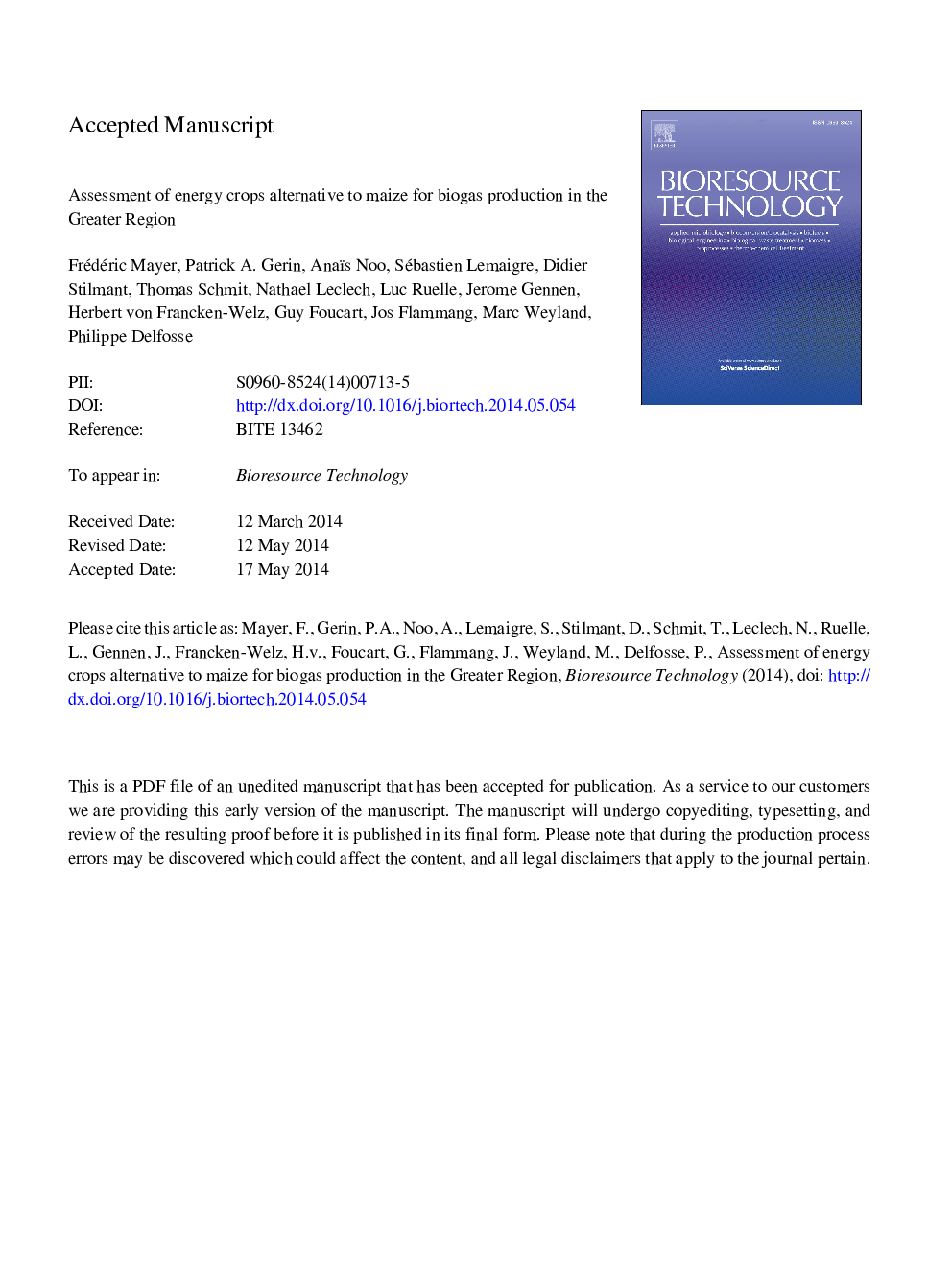| Article ID | Journal | Published Year | Pages | File Type |
|---|---|---|---|---|
| 7076907 | Bioresource Technology | 2014 | 34 Pages |
Abstract
The biomethane yield of various energy crops, selected among potential alternatives to maize in the Greater Region, was assessed. The biomass yield, the volatile solids (VS) content and the biochemical methane potential (BMP) were measured to calculate the biomethane yield per hectare of all plant species. For all species, the dry matter biomass yield and the VS content were the main factors that influence, respectively, the biomethane yield and the BMP. Both values were predicted with good accuracy by linear regressions using the biomass yield and the VS as independent variable. The perennial crop miscanthus appeared to be the most promising alternative to maize when harvested as green matter in autumn and ensiled. Miscanthus reached a biomethane yield of 5.5 ± 1 Ã 103 m3 haâ1 during the second year after the establishment, as compared to 5.3 ± 1 Ã 103 m3 haâ1 for maize under similar crop conditions.
Keywords
Related Topics
Physical Sciences and Engineering
Chemical Engineering
Process Chemistry and Technology
Authors
Frédéric Mayer, Patrick A. Gerin, Anaïs Noo, Sébastien Lemaigre, Didier Stilmant, Thomas Schmit, Nathael Leclech, Luc Ruelle, Jerome Gennen, Herbert von Francken-Welz, Guy Foucart, Jos Flammang, Marc Weyland, Philippe Delfosse,
